Five recycling ideas for school allotments
Former teacher, School Gardening Champion of the Year 2018 and founder of charity The Papillon Project, Matt Willer shares some recycling ideas for school allotments.
29 September 2023

In 2018, teacher Matt Willer won our School Gardening Champion of the Year award. Matt now runs educational charity The Papillon Project which promotes sustainable living and environmental awareness for young people. The charity works with secondary schools and sixth-form colleges across Norfolk to inspire young people to grow their own food for themselves and their local community. Here Matt shares five creative recycling ideas for schools to try.
Is creatively reusing materials worthwhile?
As long as the materials you use are safe and suitable for working with young people, and will not cause any short or long-term harm to the environment, creatively reusing or upcycling is extremely worthwhile in a school allotment. Here are three reasons why:
Save money
Buying brand new can often be expensive, especially in our current economic climate and with school budgets very tight. Repurposing materials can help to keep costs down and, in some cases, can result in not spending anything at all! Many items and materials that are creatively reused are often those being thrown away and are no longer of value to that person. The phrase 'one person’s trash is another person’s treasure' really says it all.
Help the environment
Linked directly to the above is the fact that if we can safely reuse materials to create inspirational things, this can contribute to helping the environment by keeping discarded items and materials out of landfill. It’s also very important to help students understand our throw away-culture and how recycling, reusing and repurposing items and materials helps to combat this way of life and mindset.
Engage young people
Entwined with saving money and helping the environment, and probably most crucial of all, is that creatively reusing items and materials can aid the engagement of young people when it comes to gardening. If you throw lots of money into a school gardening project, it might look fantastic, but it's good for those you are working with to understand that on an allotment you very often have to make do with what resources you have. It’s vital therefore that the students are given an opportunity to see how growing food can be done on a shoe-string budget and that it can work with very little or no money at all and you can help the environment at the same time.
"We mustn't forget to allow young people to problem solve when they make things out of reclaimed materials. The final product might be a bit wibbly wobbly but does it matter? Certainly not. What matters is that they made it - that's all that counts!"
- Matt Willer
Matt's top five upcycling tips
Upcycling. The possibilities are endless! This article could quickly evolve into a book if I shared all the ideas I have come across in school allotments and through working with young people. Here are five of my favourite examples of creatively reusing items and materials and some top tips for each of them.
1. Get creative with wooden pallets
Perhaps one of the easiest sources of wood to get hold of as often deliveries of large goods come pallet bound and are left with the goods. They are hard to dismantle without splitting the wood because they are nearly all put together with angular ring nails making it very difficult to pull out of the wood once driven in. However, there is much you can do with intact pallets.
How to choose the right pallet
|
It's important that you use the right type of pallet when working with young people as there are some that shouldn't be used for health and safety reasons. Only wooden pallets that have the following treatment codes should only be used at school allotments: debarked (DB); heat treated (HT); kiln-dried (KD) or have a European Pallet Association Logo (EPAL). Pallets that have treatment codes methyl bromide (MB); Old European Pallet Association Logo (EUR) or any coloured pallet (using blue or red) should not be used at school allotments. |
Raised beds
Pallets can easily be fastened together to form raised beds. It's recommend to use strong screws to do this and sometimes using a wooden brace is required. The open sides of the pallets (where the gaps in the planks are), can be covered over with other pieces of surplus or discarded wood to help retain the soil in the bed and prevent soil falling out. Short screws are brilliant for this as it's important that the end of the screws do not protrude out of the pallet wood inside the bed and cause injury.
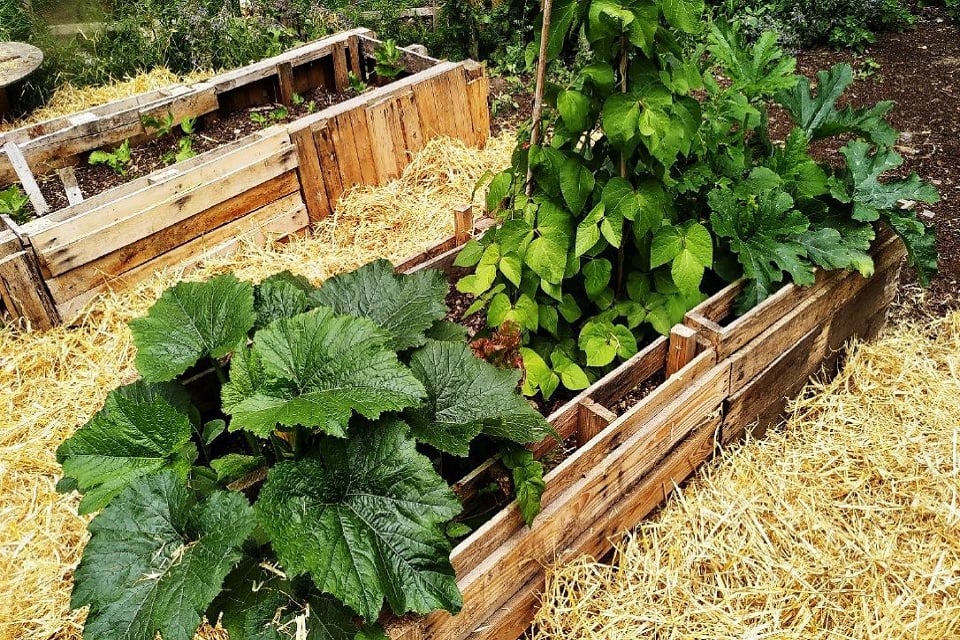
If you can obtain smaller pallets that are only a couple of planks in thickness, these can make excellent guides for young people to sow seeds. The planks that cover the soil can also help prevent weeds from growing up around the plants you want to grow too. Here's an example (also notice how the edges of this bed are made from concrete blocks half sunk in the ground; they make absolutely perfect edges that are very clearly defined and there's no worries about them rotting away.).
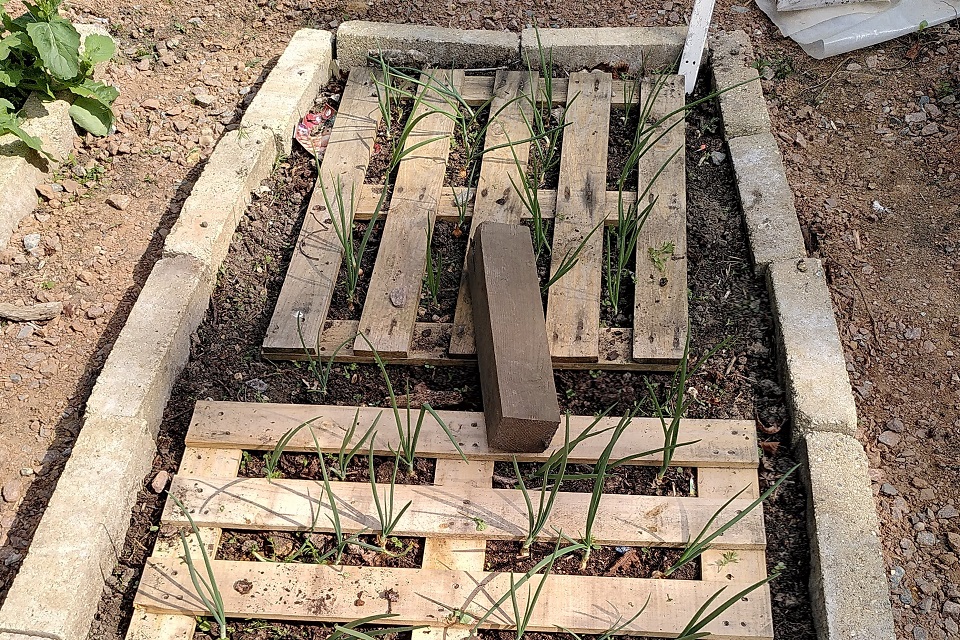
Fences
A very quick and strong way to create fences. Fences are a really vital part of helping to organise a school allotment in marking clear perimeters. Pallet fences can also act as a brilliant windbreak too.

Composters
Really easy to make. Helpful to use pallets of the same dimensions, but not essential. No posts needed as a compost station, as shown below, will stand up without any assistance. Doors and lids can always be added too. Using strong screws and fixing the pallets ‘block to block’, where the strongest points are, is highly recommended.
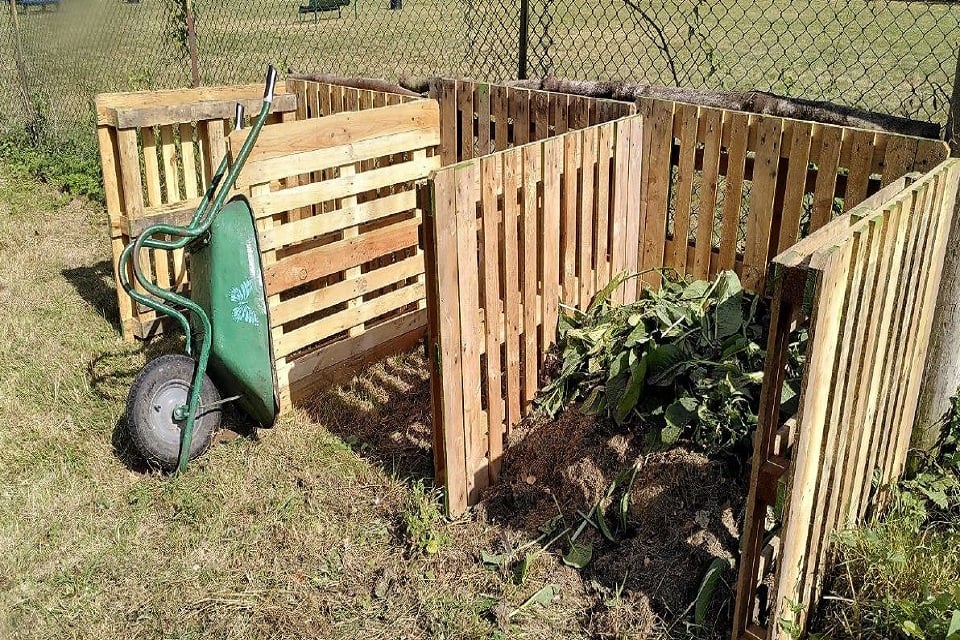
Benches
Again, easy to make. Three pallets, ideally of the same dimensions, are all that is needed to make these very straightforward and comfortable benches. Simply saw one of your three pallets in half and angle to the gradient those using them will like; there usually is only one comfortable angle! It's important to use very strong and long screws for making these pallet benches (150mm or 200mm ‘timberlock’ screws are highly recommended) and you will need an impact driver to drill in these screws. It is vital that young people are shown how to use a drill correctly if they've never used one before, and it’s also key that they are allowed to problem solve and work out where to position the screws.
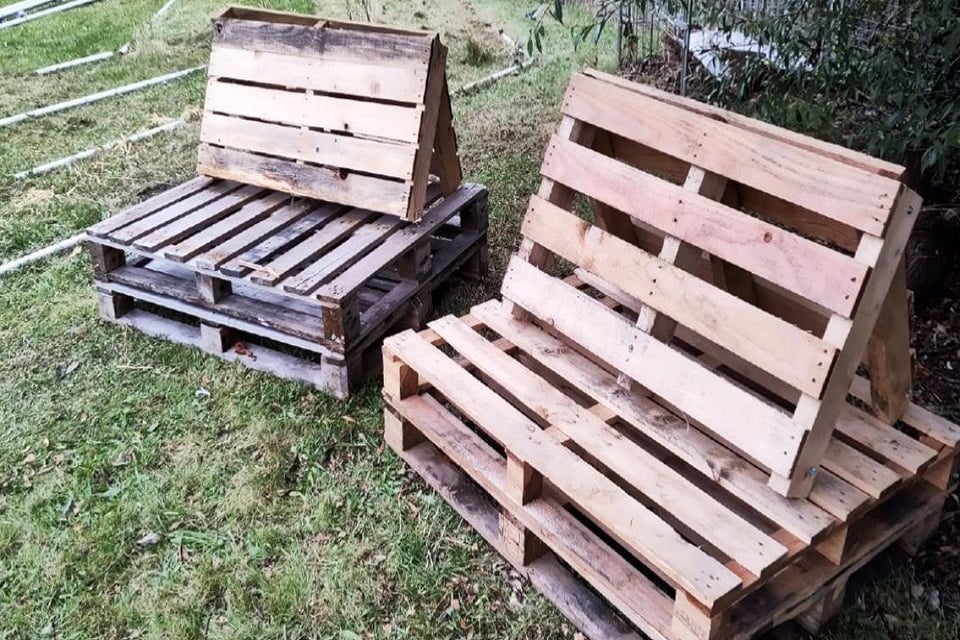
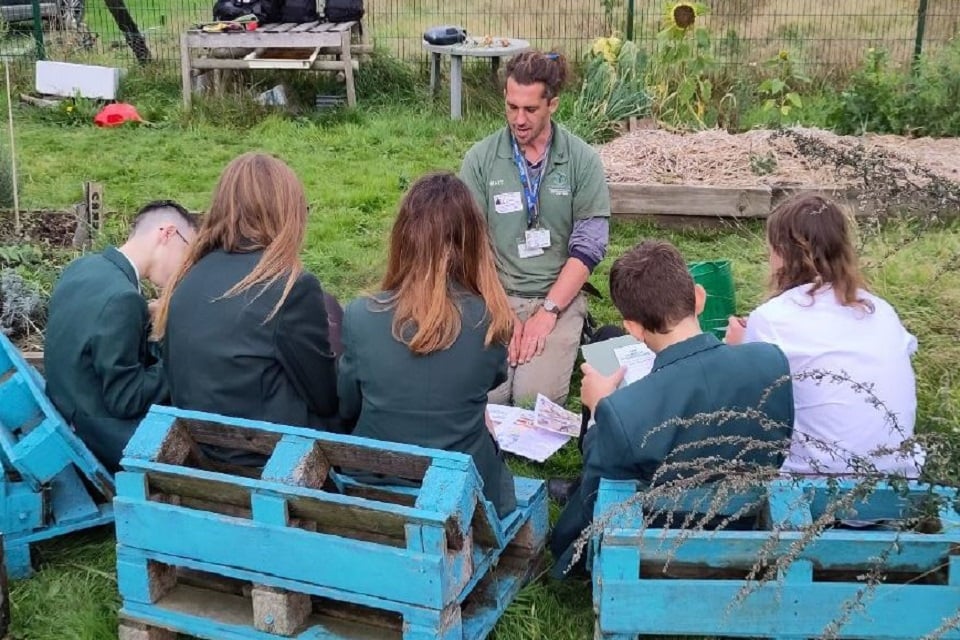
2. Create greenhouses from recycled school materials
Mini polytunnels
A simple polytunnel as shown below can be made from a large sheet of plastic and either hula hoops or underground mains water pipes. The hula hoops are cut once to open the ring and stretched to span a raised bed and fixed in a wooden frame. The sheet plastic is pulled over the hoops and fastened with staples or similar to create a small polytunnel fixed to a wooden frame that can either be hinged or lifted on and off the raised bed.
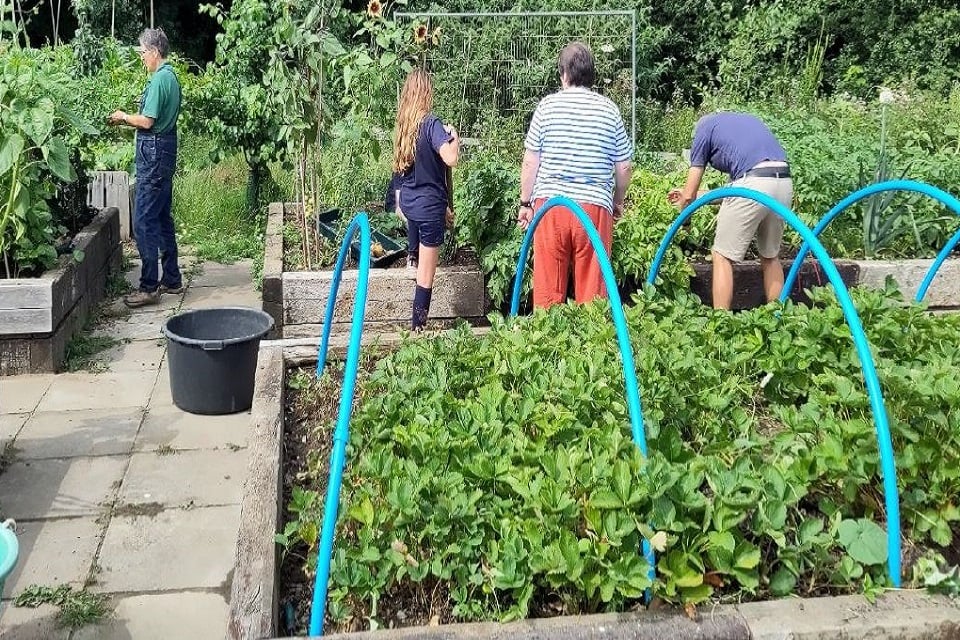
Protective structures
Many schools and offices have water dispensers which hold large water bottles that are eventually collected by the distributor, refilled and returned. However, sometimes, these can crack or split open causing them to instantly loose their value, until they are upcycled into a cloche for a young seedling to grow in early spring to prevent frost damage.
All schools, especially larger secondary schools, always have plenty of tables which also reach an ‘end-of-life’ period and are often thrown into skips for one reason or another. However, these discarded tables can be given a new lease of life. Although many table tops are made from chip board and won’t last long outside, the legs of the tables are made of strong metal and can be reclaimed and creatively reused into the most incredible things at a school allotment such as frames for protective netting to be held up.

3. Bring some fun into it
Reusing bathroom furniture as planters can be a fun way to grow plants at a school allotment, especially when you grow something out of a toilet pan! It’s different from what you might see in more conventional gardens and it always gets young people laughing and most importantly, thinking.


They may look like cryo-chambers for deep space travel, but shower doors make the ideal cold frame.
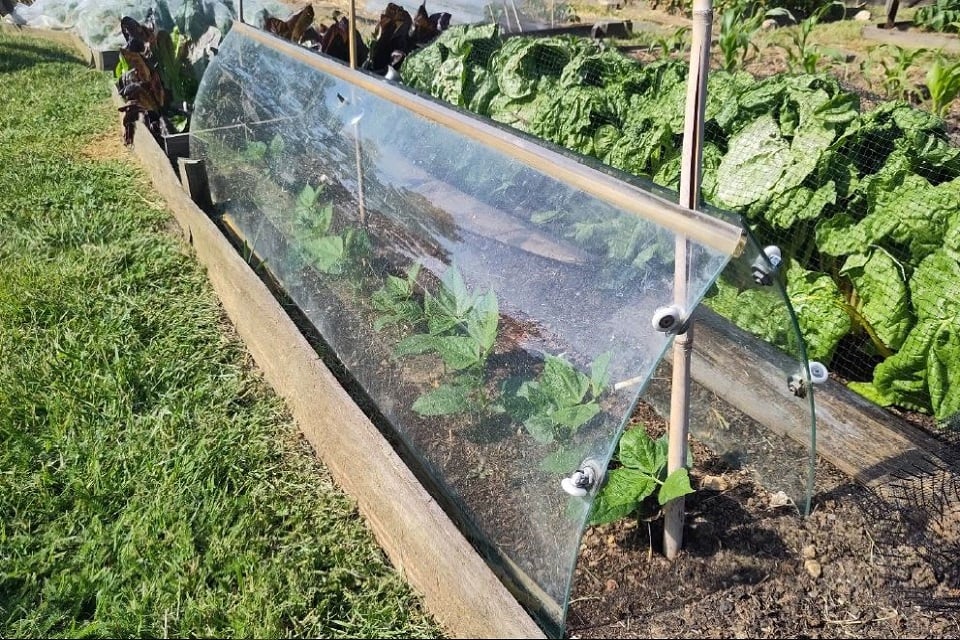
4. Re-use single-use plastics
Single-use plastics have more than one use at a school allotment, especially when it comes to helping pupils understand the importance of watering plants correctly, particularly those in a greenhouse or polytunnel. Simply remove the bottoms of bottles, ideally one-litre bottles, and insert the neck of the bottle, with the lid off, down towards the roots of the plants.
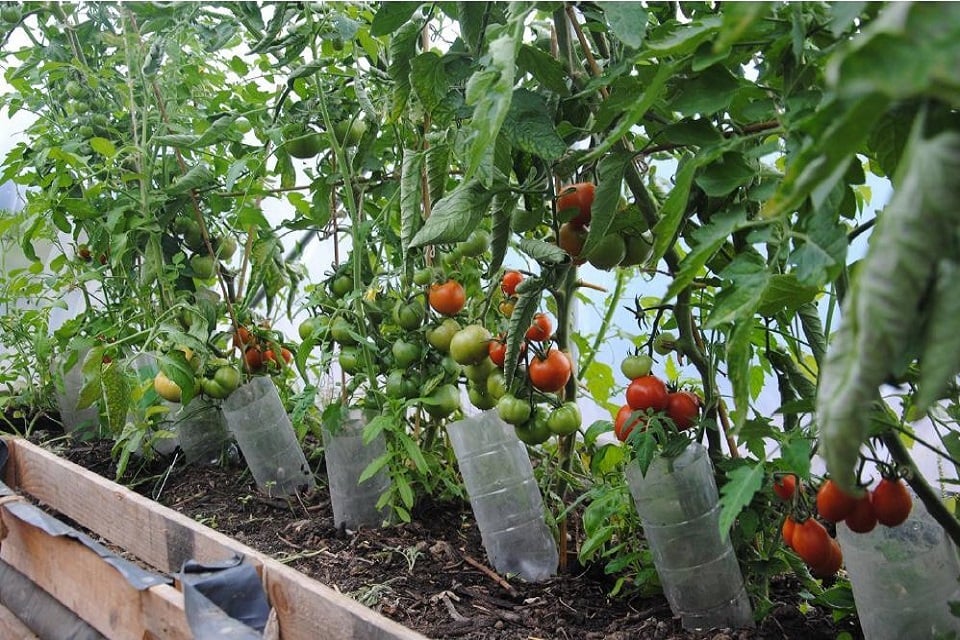
5. The possibilities are endless...

Kayaks
Strawberries growing out of a fly-tipped kayak at Reepham High School and College.
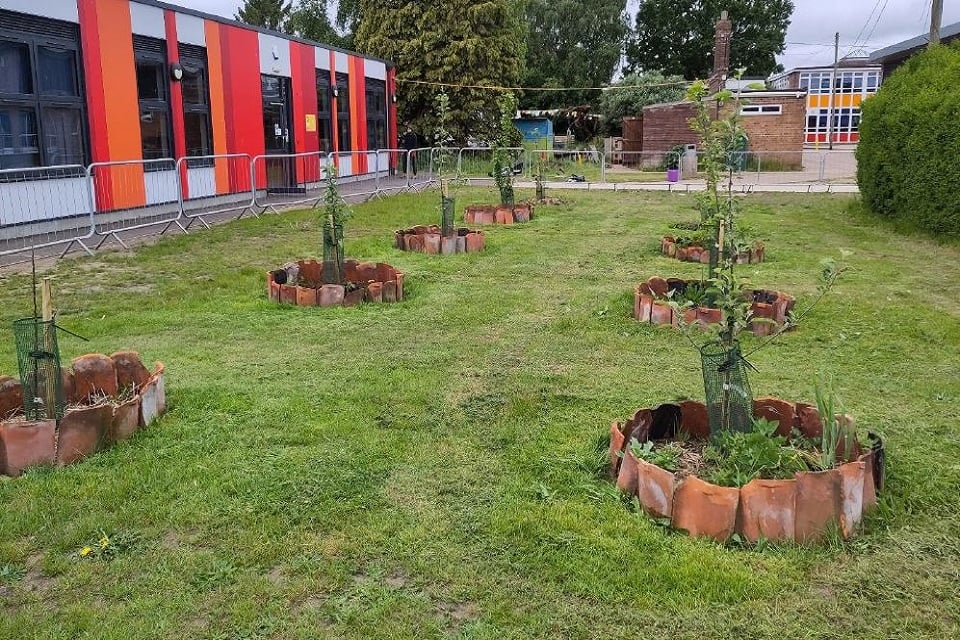
Roof tiles
If you get a hold of them from a builder, old roof tiles make the perfect border around young trees and also look really cool too. You can also create ‘tree guilds’ - planting companion plants within these encirclements which help young people to notice that the trees are there! It’s sensible to also put about a quarter into the ground to the tiles can stand up unassisted.

Filing cabinets
Schools seem to be full of filing cabinets and often ones that are discarded. If you can safely remove the draws, like these at King’s Lynn Academy, they can make great raised beds and are ideal for drought hardy plants. I would recommend drilling a few holes in the bottom for drainage and then adding some organic matter such as medium-sized branches, twigs and leaves. Turf can also be used for this too. Then add a layer of well-rotted manure or top soil, or both, and then finally add some compost on top. The dead organic matter decays very slowly over time and helps to prevent the filing cabinet from drying out.
Feeling inspired to get recycling in your school allotment? We'd love to hear about your projects. Email [email protected]